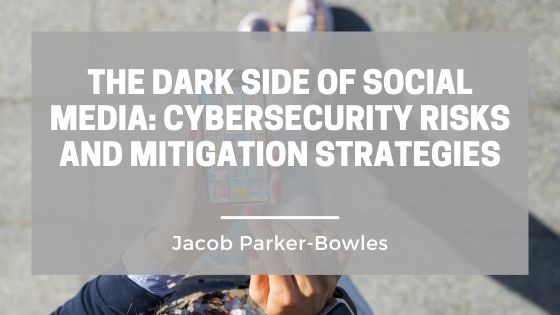In an era dominated by social media, where connectivity and communication thrive at our fingertips, a darker underbelly often goes unnoticed—the realm of cybersecurity risks. As we immerse ourselves in the virtual world, we expose ourselves to various threats that can compromise our privacy, security, and even financial well-being. In this blog post, we’ll explore the dark side of social media, identify common cybersecurity risks, and discuss strategies for mitigating these threats.
Understanding Cybersecurity Risks
Social media platforms have become fertile ground for cybercriminals and malicious actors seeking to exploit vulnerabilities for their gain. Some of the most common cybersecurity risks associated with social media include:
- Data Breaches: Social media platforms store vast amounts of personal information, including names, email addresses, birthdates, and even credit card details. A data breach can expose this sensitive data to unauthorized individuals, leading to identity theft, financial fraud, and other forms of cybercrime.
- Phishing Attacks: Phishing attacks involve using fraudulent emails, messages, or links to trick users into revealing sensitive information or downloading malware onto their devices. Social media provides a fertile breeding ground for phishing scams, with cybercriminals posing as trusted entities to deceive unsuspecting users.
- Social Engineering: Social engineering tactics involve manipulating individuals into divulging confidential information or performing actions compromising security. Cybercriminals often use social media to gather intelligence about their targets and craft convincing messages tailored to exploit their vulnerabilities.
- Malware Distribution: Social media platforms can serve as distribution channels for malware, including viruses, ransomware, and spyware. Malicious links or attachments disguised as legitimate content can infect users’ devices and compromise their security and privacy.
- Identity Theft: Cybercriminals can use social media to gather personal information about individuals and impersonate them for fraud. Identity theft can have devastating consequences, including financial losses, damaged reputations, and legal repercussions.
Mitigation Strategies
While the risks associated with social media are real and pervasive, there are steps individuals and organizations can take to mitigate these threats and protect themselves from cyber-attacks. Here are some strategies for enhancing cybersecurity on social media:
- Use Strong Passwords: Create unique, complex passwords for each social media account and change them regularly. Avoid using easily guessable passwords or sharing them with others.
- Enable Two-Factor Authentication: Enable two-factor authentication (2FA) on social media accounts to add an extra layer of security. 2FA requires users to provide a second verification form when logging in, such as a code sent to their mobile device.
- Be Mindful of Privacy Settings: Review and adjust privacy settings on social media platforms to control who can see your posts, photos, and personal information. Limit the visibility of your profile to only trusted contacts and avoid sharing sensitive information publicly.
- Exercise Caution with Links and Attachments: Be cautious when clicking links or downloading attachments from unknown or suspicious sources on social media. Verify the legitimacy of the content and sender before taking any action.
- Stay Educated and Vigilant: Stay informed about the latest cybersecurity threats and best practices for online protection. Be vigilant for signs of phishing scams, social engineering tactics, and other malicious activities on social media.
- Regularly Update Security Software: Keep your devices and security software up to date with the latest patches and updates to protect against known vulnerabilities and exploits.
Conclusion
In conclusion, while social media offers numerous benefits and opportunities for connection and communication, it also presents significant cybersecurity risks that must be addressed. By understanding the threats posed by social media and implementing proactive mitigation strategies, individuals and organizations can minimize their exposure to cyber-attacks and safeguard their privacy, security, and financial well-being in the digital age. Let’s navigate the virtual world with caution and awareness, ensuring that we reap the rewards of social media while mitigating its dark side.

